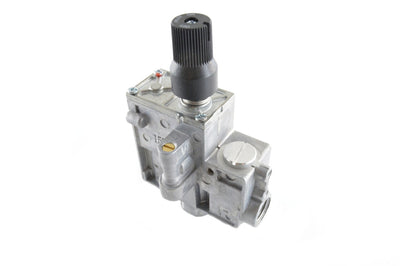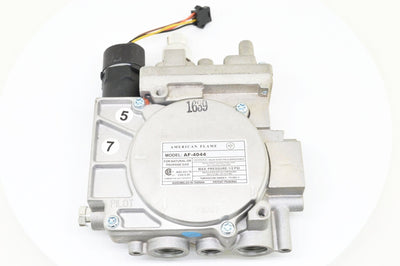What Is EPA Phase 2 Low Mass For Wood Stoves
What Is EPA Phase 2 Low Mass For Wood Stoves?
For anyone using a wood stove, clean air matters. EPA's Phase 2 Low Mass rule means stoves must burn cleaner than ever before. This blog will guide you through what this regulation entails and how it benefits your home and the environment.
Keep reading to breathe easier!
Understanding EPA Phase 2 Low Mass
EPA Phase 2 Low Mass focuses on limiting the amount of fine particulate matter that wood stoves can emit. Wood heaters, including wood stoves and pellet stoves, now need to meet strict requirements to ensure they burn cleaner and more efficiently.
The move aims to improve air quality by reducing soot and smog-forming pollutants from wood smoke. Compliance with these regulations helps protect health by minimizing exposure to harmful particulate matter which can cause respiratory issues.
To achieve these new standards, manufacturers have been innovating their designs for clean-burning technology. Many modern wood heaters surpass expectations, offering lower emissions while providing efficient warmth.
As consumers aim for energy-efficient houses with better air quality, considering the emission regulations is critical before purchasing a new stove or upgrading an existing one. This leads us directly into exploring detailed emission limits for various types of wood-burning appliances in the following section about "3.
Emission Limits for Wood Stoves".
Emission Limits for Wood Stoves
Emission limits for wood stoves are crucial for reducing air pollution and promoting cleaner air quality. To understand these limits, let's examine them in the table below:
|
Year Implemented |
EPA Emission Standard (grams of smoke/hour) |
Phase |
|
1988 |
≤ 7.5 g/h |
Initial EPA Standards |
|
2015 |
≤ 4.5 g/h |
Step 1 of the New Source Performance Standards |
|
2020 |
≤ 2.0 g/h |
Step 2 of the New Source Performance Standards (EPA Phase 2) |
The standards have been tightened significantly since their inception. The latest regulations, which took effect in May 2020, have set even stricter requirements for wood stove manufacturers. These standards aim to ensure that newer models are more environmentally friendly and sustainable. Moving forward, let's explore the types of wood stoves that meet these emission criteria.
Types of Wood Stoves
Wood stoves come in different types including non-catalytic and catalytic stoves. To learn more about the differences and which one might be best for you, keep reading!
Non-catalytic stoves
Non-catalytic stoves harness advanced design features to achieve efficient combustion without relying on a catalyst. These models sport fireboxes that retain heat at high temperatures, ensuring wood burns more completely and releases fewer pollutants.
Air is methodically introduced into the stove's separate chambers, kindling flames in patterns that maximize burn time and minimize emission of particulate matter.
Modern non-catalytic stoves can impress with their lower emission levels, often ranging from 1 to 4 grams per hour (g/h). Not only do they help conserve energy but also contribute positively to air quality by releasing minimal hazardous air pollutants like volatile organic compounds (VOCs) and carbon monoxide.
With these benefits in mind, many homeowners find them an appealing choice for wood-fired heating solutions. Moving forward, catalytic stoves offer a different approach to meet EPA guidelines while providing efficient heating options for your home.
Catalytic stoves
Catalytic stoves stand out for their innovation in reducing smoke emissions. They incorporate a coated ceramic honeycomb that acts as a catalyst to burn off the smoky exhaust produced during wood burning.
This technology helps them meet EPA's strict air quality standards by igniting and combusting particulate matter more efficiently.
These stoves require regular maintenance to keep their catalytic combustors working correctly, but the payoff is lower emissions and higher fuel efficiency. With proper care, they provide consistent warmth while contributing less pollution to the environment.
Next up, let's explore how choosing the right wood-burning stove can make all the difference in your home heating experience.
Choosing the Right Wood-Burning Stove
To choose the right wood-burning stove, consider the size of the space to be heated and whether you need a small, medium, or large stove. Look for EPA-certified wood heaters from experienced hearth product retailers who understand the products they sell. Consider additional resources like The Hearth, Patio, & Barbecue Association, Alliance for Green Heat, and Hearth.com.
- Check the size of the space to be heated and select small, medium, or large stoves accordingly.
- Seek out EPA - certified wood heaters from knowledgeable hearth product retailers.
- Utilize additional resources such as The Hearth, Patio, & Barbecue Association and Alliance for Green Heat.
Finding the Right Size and Model
After determining the type of wood stove suitable for your needs, it is essential to find the right size and model to ensure optimal performance. Consider the following factors when finding the right wood-burning stove:
- Measure the space to be heated accurately to determine the appropriate heating capacity needed.
- Research different models and sizes available in the market, considering factors such as heat output, efficiency, and emissions.
- Seek guidance from experienced hearth product retailers who can provide valuable insights into choosing a stove that meets your specific requirements.
- Take into account the design and layout of your living space to ensure that the chosen wood stove complements your home decor while effectively heating the area.
- Compare options based on features like burn time, fuel consumption, and maintenance requirements to make an informed decision that aligns with your lifestyle and heating needs.
- Evaluate additional considerations such as aesthetics, safety features, and compatibility with your existing chimney or venting system before finalizing your selection.
EPA's Air Rules for New Residential Wood Heaters
The EPA's air rules for new residential wood heaters set emission limits to reduce pollution. These regulations aim to improve air quality and promote public health. They apply to newly manufactured wood stoves, pellet stoves, hydronic heaters, forced-air furnaces, and single burn rate stoves.
The standards require compliance within specific time frames with particulate matter (PM) limits set at 4.5 grams per hour under Step 1 and 2.0 grams per hour under Step 2. Manufacturers must demonstrate compliance through performance testing for each model line.
The EPA has made changes to the wood heater testing process in response to industry feedback and challenges from state regulators. Consumers are encouraged to invest in efficient and clean-burning wood heaters for their homes, as such appliances contribute significantly to reducing harmful emissions and conserving energy resources while providing warmth during cold weather.
Wood Heating Regulations – What You Need to Know in 2023
Wood Heating Regulations – What You Need to Know in 2023
Wood heating regulations in 2023 will require wood stoves to comply with EPA Phase 2 Low Mass emission limits, which aim to enhance safety and efficiency. This means that manufacturers have improved combustion technologies to meet the PM limit of 4.5 grams per hour for Step 1, and a stricter limit of 2.0 grams per hour for Step 2 within five years.
These regulations also extend beyond wood stoves to encompass pellet stoves, hydronic heaters, and forced air furnaces. The certification process for acquiring EPA certification on a wood heater has raised concerns about practicality and accuracy of testing procedures, highlighting the need for improvement in the process.
Conclusion
In conclusion, the EPA Phase 2 Low Mass for Wood Stoves sets emission limits to enhance safety and efficiency. Manufacturers have developed combustion technologies to meet these standards with non-catalytic and catalytic stoves available in the market.
Consider the size of your space when choosing a wood-burning stove, as this will determine its suitability. The EPA's updated clean air standards aim to reduce harmful particle pollution from woodstoves and improve air quality in communities reliant on wood heat.
With these regulations, wood heating can remain affordable and effective while minimizing potentially dangerous emissions.
← Older Post Newer Post →




























